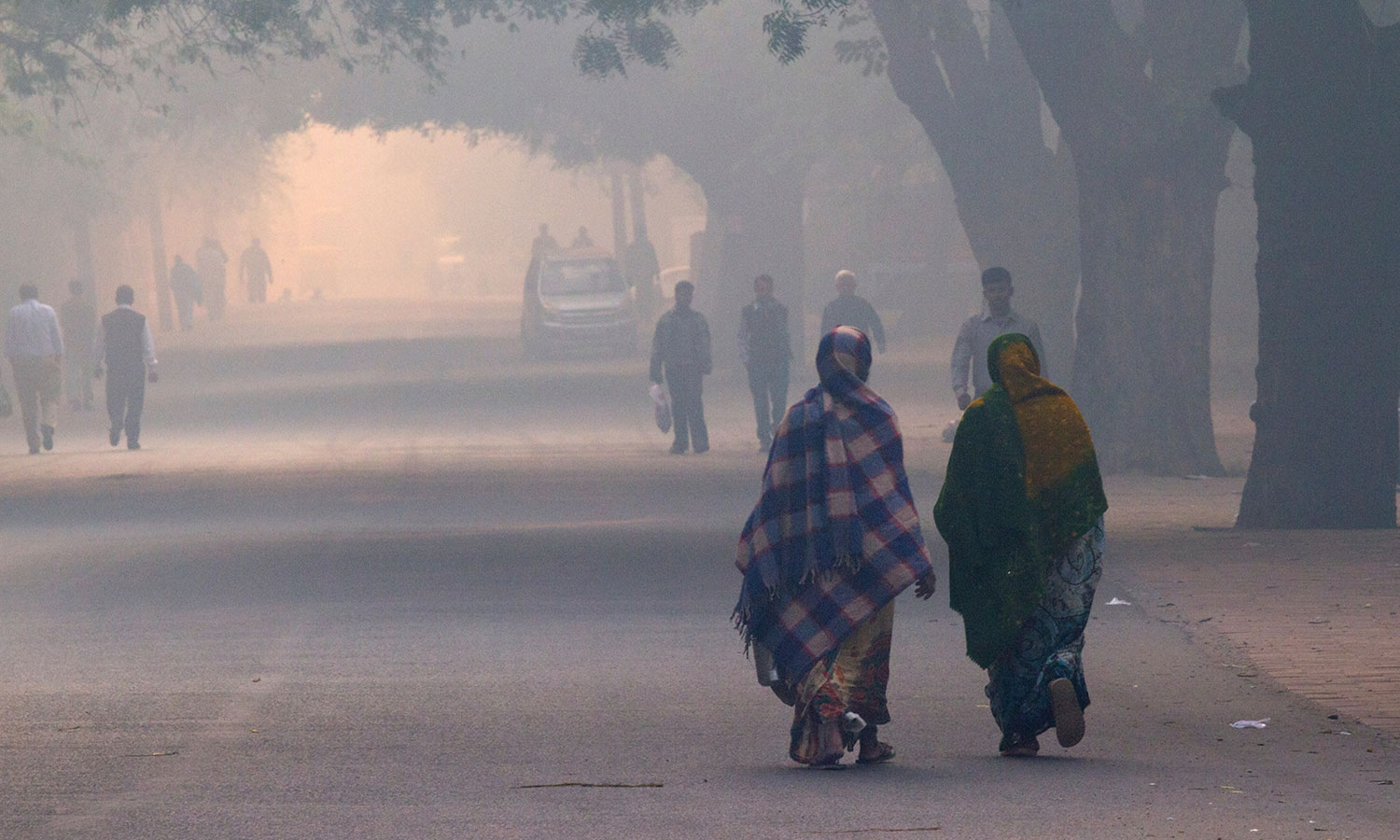Leaders of developing countries should take a look at a new study by professors and researchers at Harvard, Yale, and the University of Chicago, and keep it in mind when they go to Paris to discuss a global climate agreement this December.
According to the study, published in the journal Economic & Political Weekly (EPW), “India’s population is exposed to dangerously high levels of air pollution.” Based on ground-level measurements and satellite data, the paper estimates that 660 million Indians live in areas exceeding the Indian government’s air quality standard for fine particulate pollution. The causes are the same as they are everywhere: cars, industrial activity, and electricity generation. Coal is India’s primary source of power, accounting for more than half of its energy portfolio. Car ownership is rapidly becoming more widespread, and Indian cars often run on diesel, which generates more particulate pollution than gasoline. While diesel emits less carbon, it may cause just as much global warming because the soot it creates is also a contributor to climate change.
It’s not new news that India’s air pollution is terrible. The 2014 Yale Environmental Performance Index found India had the fifth worst air pollution out of 178 countries, and the World Health Organization ranked 13 Indian cities among the 20 in the world with the worst fine particulate air pollution. As The New York Times noted in a 2014 editorial, “According to India’s Central Pollution Control Board, in 2010, particulate matter in the air of 180 Indian cities was six times higher than World Health Organization standards.”
Here’s why this matters for climate change: The dirty fuels that cause particulate pollution are the same dirty fuels that cause global warming. Cracking down on local air pollution will not only save lives, it will shift the economics of energy toward cleaner sources that produce less carbon. The willingness of India and other populous developing countries such as China, Brazil, and Indonesia to adopt such policies may determine the fate of the Earth.
A principal challenge to decisive, coordinated global action against climate change is the reluctance of developing countries to get onboard. Historically, poor nations have quickly escalated their energy use as they move from a rural farming economy to an urban industrial one. In China, both carbon emissions and particulate pollution have skyrocketed in recent years as the country’s economy has boomed. Now that its cities are choked in smog, China has finally begun to invest in cleaner energy. In November, the Chinese government committed to working alongside the U.S. to reduce its emissions and craft a global agreement at the climate negotiations in Paris later this year.
Other industrializing nations aren’t there yet. India, for example, lags China in economic growth and carbon emissions. But if it were to catch up, with its population of 1.25 billion, the climate impact would be devastating.
Understandably, Indian Prime Minister Narendra Modi refuses to subjugate the interests of his 400 million citizens living without electricity to the demands of wealthy countries that emit far more carbon per capita. But he doesn’t acknowledge that air pollution and climate change also threaten to harm India’s most vulnerable citizens. Modi skipped the U.N. Climate Summit last fall, and in his subsequent speech to the U.N. General Assembly, he voiced only vague platitudes about climate change — and a befuddling assertion that yoga can be used to help combat it. Brazilian President Dilma Rousseff did address the Climate Summit, but she argued that developing countries should have different, lesser responsibilities than their rich counterparts.
That’s all fair enough in principle. But countries such as India and Brazil must recognize that local air pollution has its own costs in lives and dollars. The EPW study finds that reducing particulate pollution everywhere it exceeds the Indian government’s standard would increase life expectancy by an estimated average of 3.2 years in those areas. For 660 million people, that’s a total of 2.1 billion life years. Absent that improvement, the sickness and premature death caused by air pollution will continue to drag on economic growth through health care costs and lost productivity — not to mention the human cost to individuals and their families. As the Times editorial pointed out, “The World Bank says that environmental degradation is costing India $80 billion annually and accounts for 23 percent of the nation’s child mortality. The bank estimated that reducing particulate emissions by 30 percent by 2030 would save India $105 billion in health-related costs.”
The EPW paper argues that cleaner air would pay for itself, and it offers three suggestions for improving air quality: (1) more and better monitoring stations around cities and at industrial pollution sources; (2) replacing little-used criminal penalties for pollution violations with regularly implemented civil fines or a pollution tax; and (3) instituting an emissions credit trading system. If India adopted these approaches, it would be able to lift its citizens out of poverty while improving their health and restraining carbon emissions — and it would set an example for other developing nations to follow.



